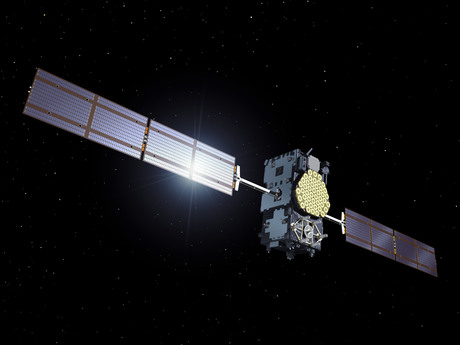MEOSAR goes to work

The Australian Maritime Safety Authority’s (AMSA) Medium-altitude Earth Orbit Search and Rescue (MEOSAR) system for emergency distress beacon detection is now operational and supporting search and rescue response in Australia.
The system is expected to improve search and rescue response times for distress beacon owners in emergency situations.
AMSA Chief Executive Officer Mick Kinley said during the validation phase, MEOSAR has proven to deliver a faster and more accurate detection of distress beacon signals.
“In one search and rescue incident alone, MEOSAR was able to confirm the location of a person in distress two hours before the existing system,” Kinley said.
“Australia is the biggest user of distress beacons in the world on a per capita basis, with more than 450,000 beacons currently registered.
“This vital improvement in the time it takes to detect an emergency beacon will be extremely beneficial, particularly in our country that has a search and rescue region equivalent to one-tenth of the world’s surface.”
The satellite tracking ground station in Mingenew, Western Australia, detects beacon activations from Emergency Position Indicating Radio Beacons (EPIRBs), Personal Locator Beacons (PLBs) and Emergency Locator Transmitters (ELTs) from overhead satellites and forwards the information to the Mission Control Centre in Canberra, initiating search and rescue response.
Kinley said Australia and New Zealand had collaborated to achieve overlapping coverage of the Australian and New Zealand search and rescue regions with satellite tracking ground stations in both countries.
“The MEOSAR system will operate in tandem with the existing Low-altitude Earth Orbit Search and Rescue (LEOSAR) system, which has provided Australia’s distress beacon coverage since 1982,” Kinley said.
In time MEOSAR will replace the LEOSAR satellite system, which will be phased out in coming years under international arrangements.
Existing beacon owners should be aware that their beacons will continue to be detected and processed, without any change.
AMSA urges all beacon owners to ensure their beacon is registered. It’s free, fast and simple when completed on the distress beacon website at www.amsa.gov.au/beacons or by phone on (02) 6279 5000.
Why P25 technology remains a good fit for public safety communications
Digital LMR technology ensures police officers, firefighters and emergency management teams can...
From past to present: leveraging satellite data for better disaster resilience
Whether monitoring flood-prone regions or assessing wildfire-prone landscapes, historical...
Lancashire Police adds in-car video to full vehicle fleet
Motorola Solutions' M500 in-car video solution observes a vehicle's environment from...





